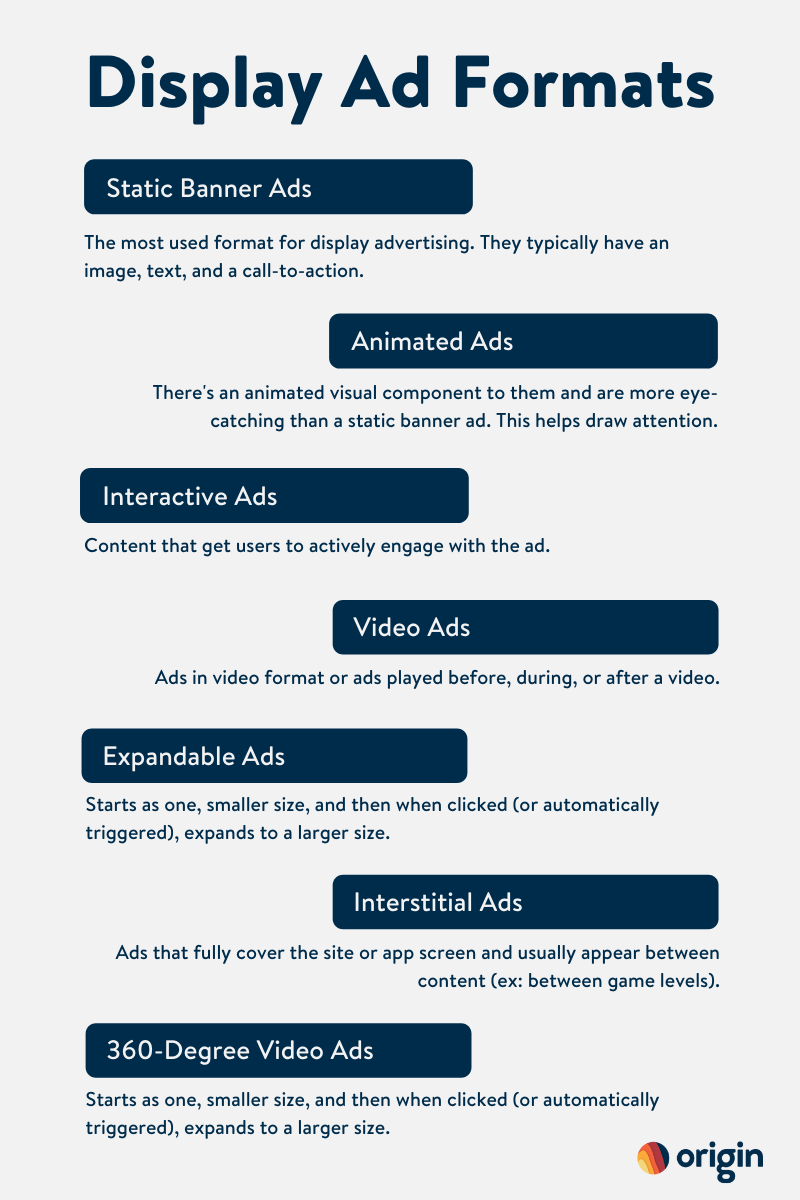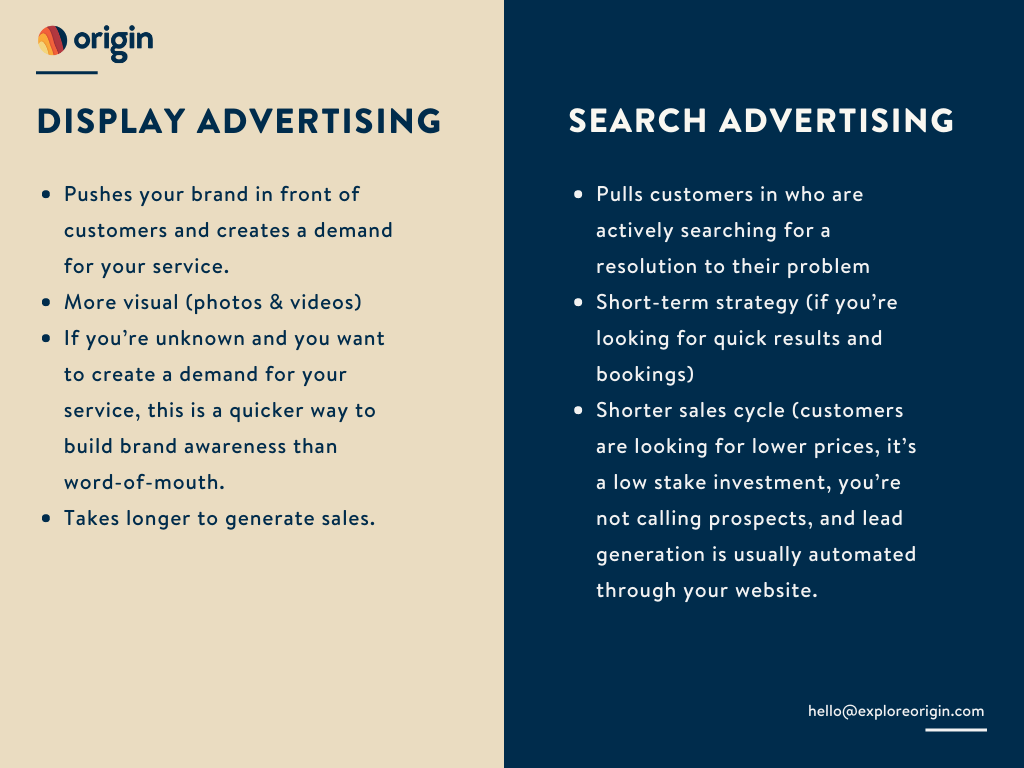An Overview: Display Advertising for Curious Outfitters
Digital display advertising is visually appealing and dynamic graphics placed on websites, social media, and apps either at the top, side, or middle of web content. They’re used to increase awareness of your company and bring customers to your website.
What Are Different Types Of Display Ads?
There are about five different types of display ads that vary between platforms and their responsiveness. While formats may differ from platform to platform, the overall goal of a display ad is to introduce your business to new customers and send them to your website using unique graphics and text.
Traditional (Banner) Display Ads
The most popular type, display ads are rectangular and image-based ads placed on top, side, or middle of content. It’s usually a static picture with some text.
Responsive Display Ads
Adjusts its size, appearance, and format depending on the site it’s located through the Google Display Network. You can upload separate creative assets and let Google create an ad or you can upload your own image ad.
Retargeting Display Ads
When someone visits your website and doesn’t book a trip with you, tracking pixels or cookies follow them to other sites and reminds them of your services through a display ad.
Native Ads
Paid, or sponsored, content that “blends in” with organic content on websites. The content needs to match the tone and style of the site it’s posted on.
Social Ads
Display ads placed on social media platforms in various formats. For example, the ads you see on Facebook, Instagram, Pinterest, etc.
What Kind Of Formats To Use For Display Ads
On top of there being different types of display ads, there are different formats for them too, like images, videos, and interactive ads.

Should You Use Display or Search Ads For Your Business?
When it comes down to paying for advertising, it’s usually a combination that sees quicker and long-lasting results.
There are three things you should consider when you choose between display or search advertising:
Start by conducting some keyword research. Use phrases and words your customers would use to search for your guiding service. If there isn’t much search volume for the terms you’ve picked, it makes sense to do display advertising to grow brand awareness.
Using display ads on sites your ideal customer is on already they’ll see your name more often.
Alternatively, if your search terms have high volume, use search advertising because your potential customers are already looking for your service.
Second, decide how much you can spend on advertising. If you have a small marketing budget, use search advertising because it’ll give you faster results for less money. Growing your brand awareness through display ads is a long-term strategy which means you need a bigger budget for it too.
Finally, you need to ask yourself where are your customers in the marketing funnel? Are they just browsing a travel website or did they just search for a mountain guide in Boulder, Colorado? Knowing what stage they’re in will help you decide on the mode of advertising.
Here’s a quick overview of the biggest differences between display and search advertising.

It’s up to you and what your budget looks like to determine which type of paid advertising you want to go with.
About the Author:
Jessica is the Digital Marketing Specialist for Origin. Origin is innovative online booking software designed specifically to help tour guides and outfitters keep trip reservations and staff availability up-to-date, prevent overbookings, and even help you assign guides to newly booked trips with automated text messages to confirm availability. Interested in learning more? Schedule a call with us or visit our website: www.exploreorigin.com












